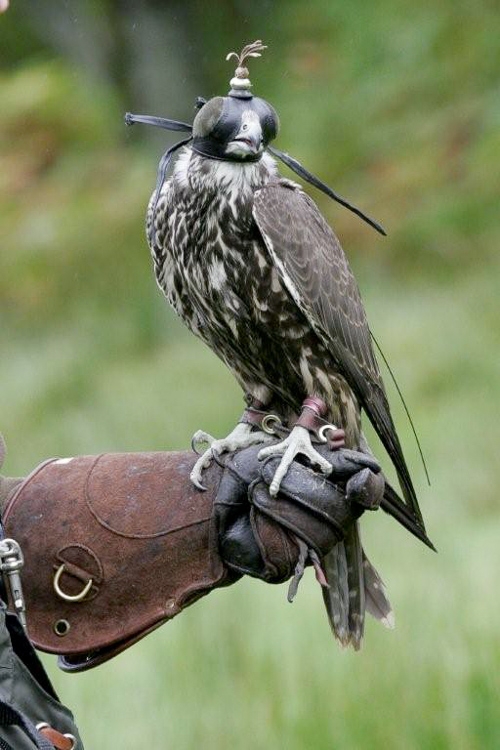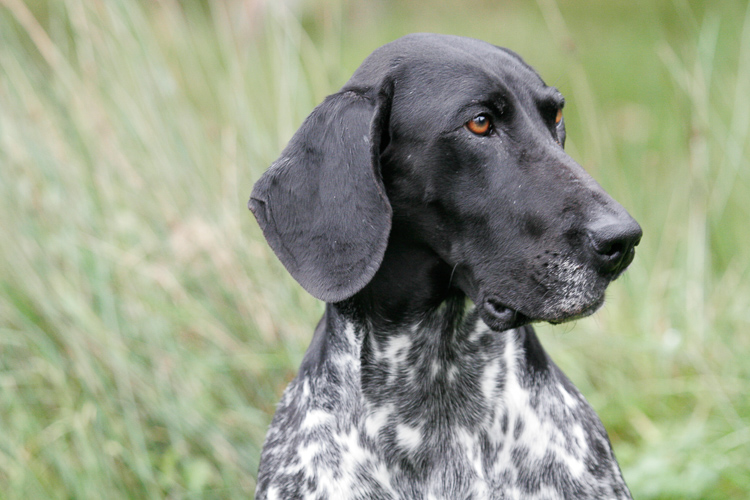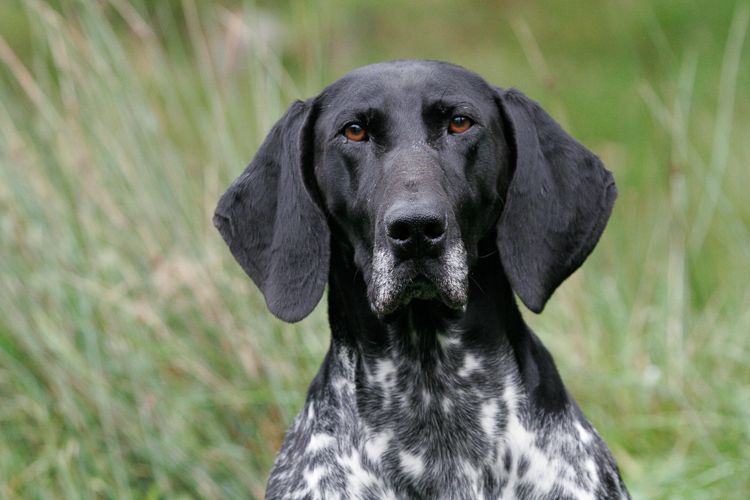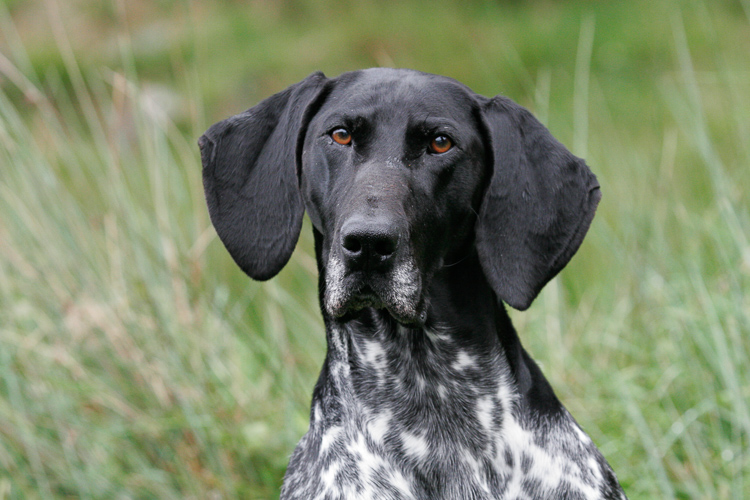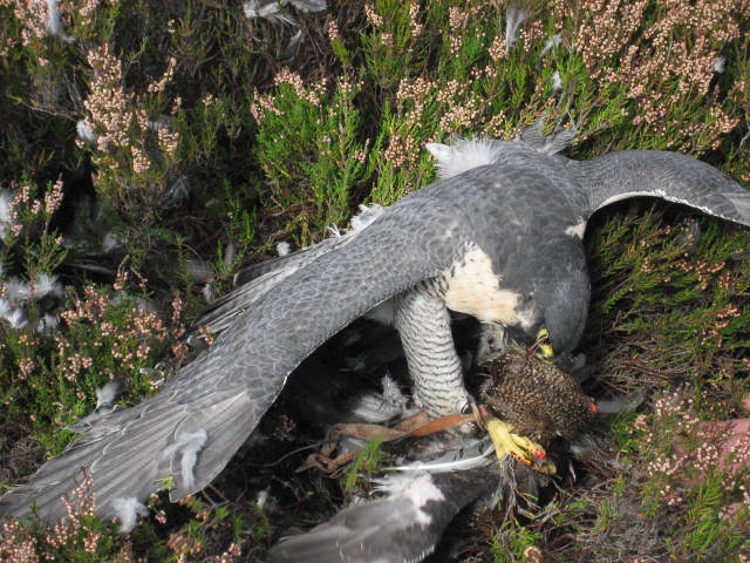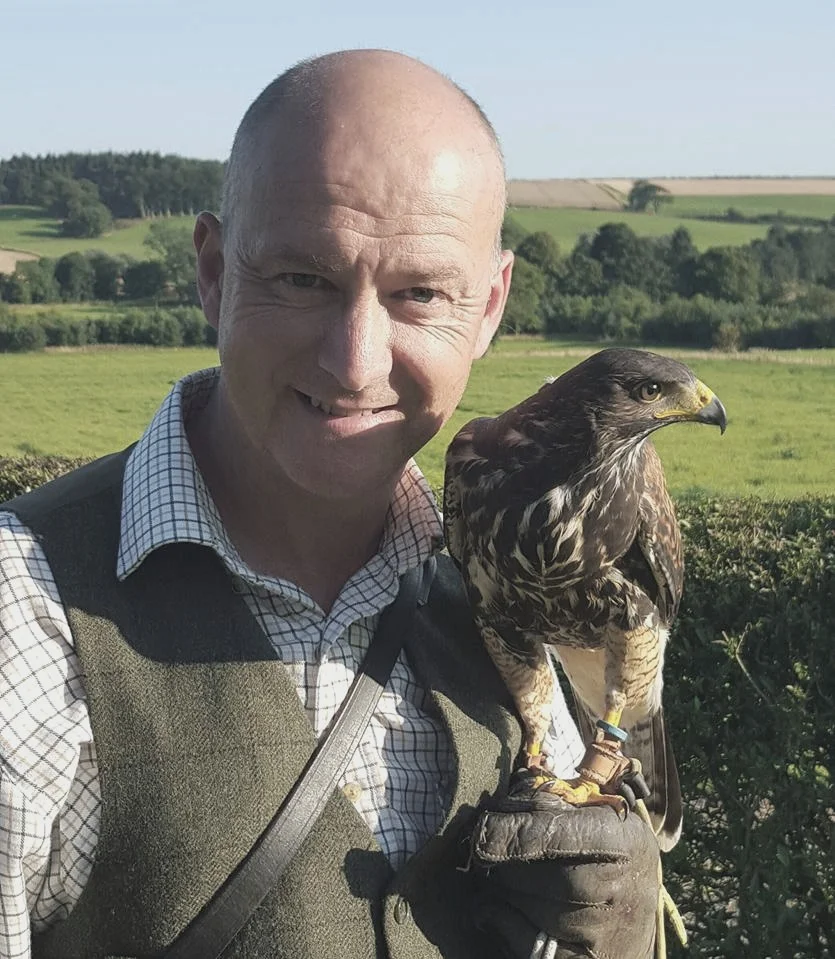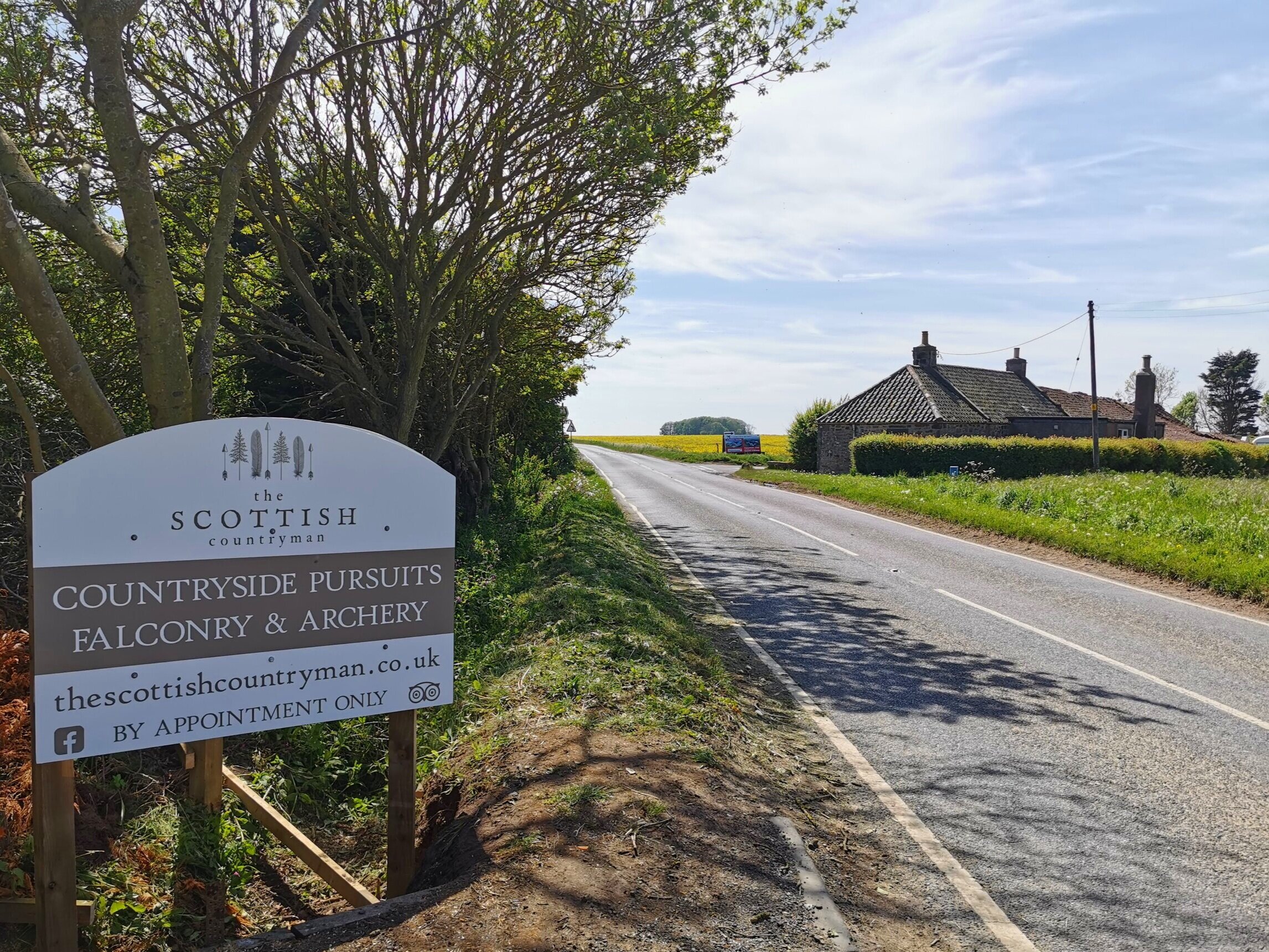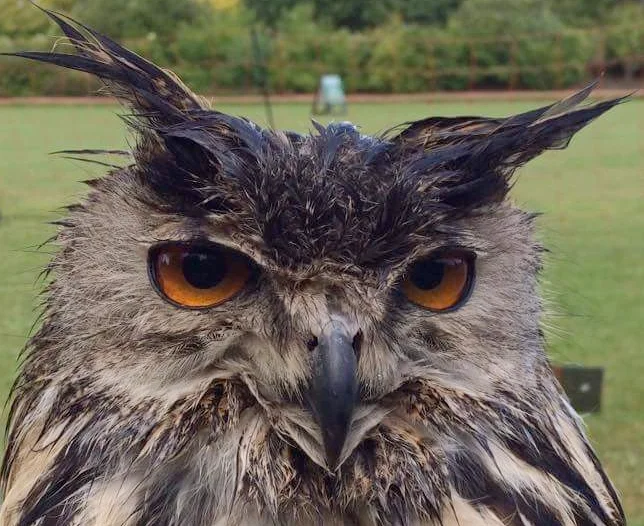What is falconry?
/Understanding the ancient art and sport of falconry
A hooded falcon ready for the hunt
Some things you should know first
Falconry in the UK is not a closed sport; it can be practised by anyone who has the means and the time.
Birds of prey used in falconry in the UK are not captured from the wild, they are bred in captivity.
Birds of prey are not trained by 'starving' them. They fly to catch live prey and that prey is FAST! So the birds need to be able to fly fast and it takes a lot of energy to fly fast. This means falconers have to manage their birds' weight very precisely, rather as an athlete must pay attention to his or her diet shortly before a big race.
A bird of prey must be in great condition to be a successful game-hawking bird.
What is meant by 'falconry'?
At is simplest, falconry today usually means one of two things:
breeding / training birds of prey
using a trained bird of prey to hunt for quarry
This post focuses on the ancient practice of using a trained bird of prey to hunt live prey. The falconer can only hunt whatever his hawk would naturally hunt; it is the bird that dictates the prey, not the falconer. Falconry is arguably the world's oldest field sport and one that involves an enormous amount of skill, experience and luck to achieve the intended outcome. This particular branch of falconry is known as game-hawking.
The origins of falconry
No-one is sure when the first 'falconer' existed; when the first person had the idea to harness a bird of prey's natural ability to hunt and to use it for his own purposes. However, the spread of falconry during the 2nd century BC both east and west suggests its origins may lie in the plains of Central Asia. It is thought that falconry in ancient times was simply a means of adding protein to the diet; a way of covering large distances over open plains with little or no cover to secure prey species that could not be hunted quite so successfully on foot.
We know of falconry from cave paintings, ancient Persian accounts, Chinese pottery and centuries of writings and poetry. Marco Polo recorded watching Khan of the Mongols hunting wolves with eagles and Caesar and Richard the Lionheart both used falcons to combat enemy carrier pigeons. Falconry was introduced to England in 860AD and was well-established by the time William the Conqueror invaded in 1066AD, with - of course - a huge entourage of trained falcons and liveried falconers. During the Middle Ages, falconry became a key emblem of social standing, a means of displaying wealth and power. A ‘sport of kings’ until the 19th century, it was especially loved by the Stuart kings. Mary, Queen of Scots was an able falconer to that most bewitching of British birds, the Merlin - Steve’s favourite falcon.
Although no longer practised on such a grand scale, today's game hawking has not really changed much since those times - the elements remain the same: land, prey (quarry), a handler and a trained bird of prey,
This is the kind of land space you need for game hawking! A stunning grouse moor in Scotland
Harnessing a bird of prey's natural hunting ability
Birds of prey include falcons, hawks and eagles - part of a group of birds collectively known as raptors. Raptors hunt live quarry, catching everything from other birds to small mammals, depending on their species. Some birds of prey catch prey 'on the wing' - meaning during flight - whilst others pounce on prey that is on the ground.
Birds of prey are never - cannot be - tamed. But they can, with dedication, perseverance, and the luck that comes from securing a bird with the just the right temperament and breeding, be trained. A falconer's job is to train a bird of prey to hunt in collaboration with the falconer and, typically in game-hawking, his dog. Game-hawking involves a symbiotic relationship between these three, between human, dog, and hawk, where each needs the other in order to secure a successful outcome.
Game-hawking in Scotland
In Scotland, the epitome of traditional game-hawking happens on a grouse moor, where a dog with hunt, point and retrieve or HPR qualities, like the beautiful German Short-Haired Pointer (below), is used by the falconer to help to flush the quarry. Quarry can be partridge, grouse, pheasant, rabbit, snipe, or woodcock.
The falconer must be able to read the ground, the weather, the dog, and the bird and be able to orchestrate the actions of the dog and the bird at just the right time to position both for the possibility of a flush of quarry.
The quarry or prey species used in falconry tend to be highly camouflaged and will be very well hidden in heather or deep grasses or tucked into hollows and ditches. They are alert to danger, reluctant to break cover and quick to escape and evade, so delivering quarry to the bird of prey requires a huge amount of skill and luck!
So what actually happens In game-hawking?
First, walking with the hooded bird on his fist, the falconer sends the dog out to 'quarter' the moor. The dog is worked using hand signals and whistles to direct it across many hundreds of yards, encouraging it to scent quarry and then stop 'on point' when it has found something.
With the dog poised and ready, the falconer then removes the bird's hood and releases the bird into the wind, giving it time to climb, scanning the ground as it gains height and circles the dog in ever-widening patterns, working to position itself for pursuit.
Alistair McKissock, one of Scotland's most respected falconers, prepares to release his Peregrine
Once the optimum pursuit position has been achieved, the dog is whistled / called to 'get in'. It runs forward to flush out the quarry - though it must not catch it itself, of course! The falconer then shouts to the falcon using a well-rehearsed signal to let the bird know there is prey to be had.
And then the chase begins!
Calling the dog back to his side, the falconer now watches his bird's marvellous, athletic aerial display.
A game hawk's pursuit of prey can last many minutes and range over great distances but many end with the prey escaping, going to ground again. Sometimes, however, just sometimes, all the elements come together perfectly and the bird catches the quarry, landing with it amongst the heather, exhausted but triumphant! It is one of nature's most exhilarating displays and a thrilling spectacle for the novice or the experienced game-hawker.
A Scottish Peregrine with its quarry
Once the raptor has caught the prey, the falconer must locate his bird and catch up to it as quickly as possible, The bird is loose, after all, and trained but not tamed. Were it to eat and then fly off, it would have no need to work with the falconer for many hours and could itself become prey to another, larger raptor species. Buzzards and eagles will attack peregrines, for example.
Once located, the falconer waits for the raptor to eat a little of its well-earned meal and then - patiently and respectfully - switches the prey for a glove with a piece of food on it, with which he can reclaim the bird and secure it safely once again.
The point of the game-hawking experience is to enjoy the style and grace of the bird of prey, its superior speed and hunting skills, its supremacy in the air. Although it has been practised for many, many hundreds of years, game-hawking continues to provide the ultimate challenge to today's modern falconers. You can experience a taste of hawking with me. We would use a Harris hawk, to reduce the time and distance we need, but you will still be able to enjoy the thrill of watching nature unfold!
I've chosen to share this beautifully-made video featuring Paul Manning with you as I think it gives an accurate representation of how falconers feel about what they do. Enjoy!
Sources
Falcons and Falconry by Frank Illingworth [Blandford Press Limited, London]
Links
TSC Recommends
Did this answer your questions about falconry? Let me know in the comments below if you have anything else you'd like to ask.


